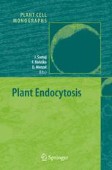Search
Search Results
-
Transcriptome analysis in abiotic stress conditions in higher plants
Drought, high salinity, and low temperature are major environmental factors that limit plant productivity. Plants respond and adapt to these stresses...
-
Signal transduction in plant cold acclimation
Temperate plants respond to low temperature by activating a cold acclimation program leading to enhanced tolerance to freezing temperatures. This...
-
Plant salt tolerance
Soil salinity adversely affects crop productivity and quality. The success of breeding programs aimed at salinity tolerant crop varieties is limited...
-
Plant responses to heat stress
The heat stress response is characterized by inhibition of normal transcription and translation, higher expression of heat shock proteins (hsps) and...
-
Sensors of abiotic stress in Synechocystis
Systematic mutagenesis of histidine kinases in combination with DNA microarray technology has allowed us to identify sensors for cold, hyperosmotic...
-
Abscisic acid signalling
Signalling of abscisic acid (ABA) in plants is characterized by an amazing number of secondary messengers that are part of the pathway or modulate...
-
Cholera toxin: mechanisms of entry into host cells
Cholera toxin moves from the plasma membrane to the ER of host cells to cause disease. Trafficking in this pathway depends on toxin binding to...
-
The Ustilago maydis killer toxins
Killer toxins are small proteins secreted by a number of fungi that are lethal to susceptible cells (generally fungi of the same or related species)....
-
S. cerevisiae K28 toxin – a secreted virus toxin of the A/B family of protein toxins
Since the initial discovery of toxin-secreting killer strains in the yeast Saccharomyces cerevisiae more than 40 years ago, continuous research on...
-
Taxonomy and phylogenetic diversity among the yeasts
Yeasts are among the economically and scientifically most important eukaryotic microorganisms known. At present, there are 1,500 recognized species,...
-
Diphtheria toxin, diphtheria-related fusion protein toxins, and the molecular mechanism of their action against eukaryotic cells
Diphtheria toxin remains one of the most successfully studied of the bacterial protein toxins. A detailed understanding of the structure function...
-
Cofactor Regeneration at the Lab Scale
Progress made in lab-scale applications of various coenzyme regeneration systems over the last two decades has mainly focused on the applications of...
-
Comparative genomics and gene finding in fungi -- Supplement
Online Supplement to Chapter 1
-
Somatic and Zygotic Embryogenesis in Avocado
Avocado is a species widely cultivated for its highly nutritious fruit. Currently, soil-borne diseases such as Phytophthora root rot are severe...
-
Genomic and Molecular Analyses of Transporters in the Male Gametophyte
The major events of male reproductive development and function have been known for years, but the molecular and cellular bases of these processes...
-
Differential Gene Expression During Somatic Embryogenesis
Somatic embryogenesis is a complex developmental program in which somatic cells are induced for a commitment towards forming totipotent...
-
Embryogenesis in Catharanthus roseus: Roles of Some External Factors in Proliferation, Maturation and Germination of Embryos
Catharanthus roseus is an important medicinal plant that contains two well-known anticancerous alkaloids, vincristine and vinblastine. Cell...
-
Participation of Plant Hormones in Determination and Progression of Somatic Embryogenesis
In vitro culture protocols have been developed for many species, mainly using empirical approaches, to induce somatic embryogenesis from various...
-
Rab GTPases in Plant Endocytosis
The Rab family is part of the Ras superfamily of small GTPases. In eukaryotes Rab GTPases are present as members of gene families, and the...
-
Methods and Molecular Tools for Studying Endocytosis in Plants---an Overview
Proteins of the endocytosis machinery in plants, such as clathrin and adaptor proteins, were isolated and characterized using combinations of...
